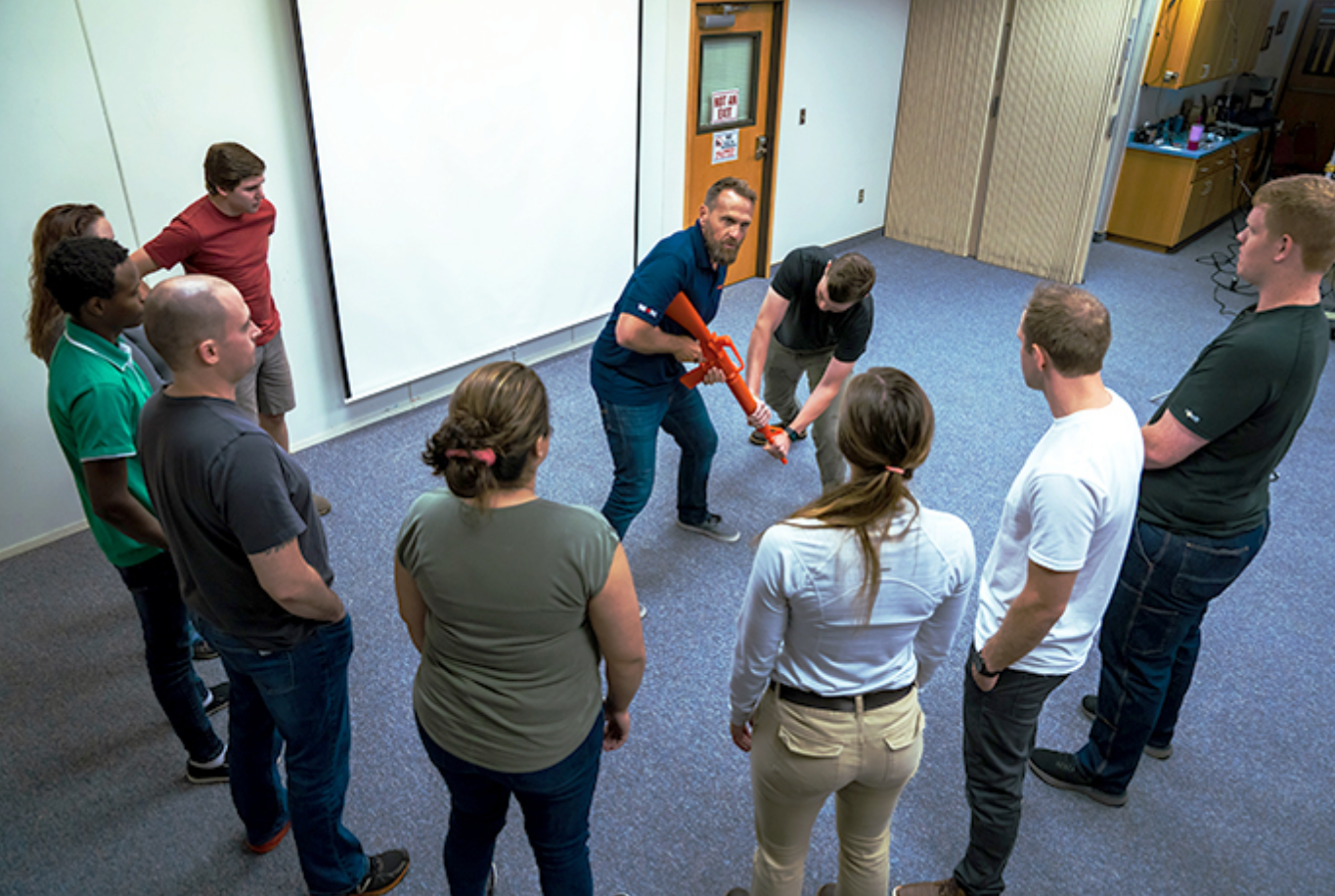How Active Shooter Training Improves Emergency Situation Action Preparedness
How Active Shooter Training Improves Emergency Situation Action Preparedness
Blog Article
The Crucial Role of Energetic Shooter Training in Enhancing Emergency Feedback Strategies in Different Environments
Active shooter training has actually arised as a fundamental element in refining emergency reaction approaches across diverse setups, from instructional organizations to company settings. The performance of such training hinges on different variables, consisting of the details context in which it is applied and the recurring commitment to renovation.
Value of Active Shooter Training
In an age noted by increasing concerns over public safety and security, the importance of energetic shooter training can not be overemphasized. As cases of weapon physical violence in public spaces remain to rise, organizations throughout various sectorsâEUR" universities, workplaces, and public venuesâEUR" are identifying the requirement of preparing their employees and areas for such emergencies. Active shooter training equips people with important abilities and expertise to respond effectively in lethal circumstances, possibly decreasing casualties and conserving lives.
The training not just concentrates on prompt reaction actions, such as evacuation and sheltering in position, but likewise promotes a society of understanding and preparedness. By engaging in realistic simulations and discussions, participants can identify potential susceptabilities within their environment and establish methods for mitigating risks. Such training improves communication and coordination among team members and first responders, ensuring a more unified technique throughout situations.

Key Parts of Effective Educating
Effective energetic shooter training consists of several essential elements that enhance preparedness and feedback abilities. Firstly, sensible scenario-based simulations are vital. These exercises submerse individuals in high-stress scenarios that simulate possible energetic shooter events, enabling them to practice decision-making and physical feedbacks under pressure.
Additionally, training should consist of a thorough understanding of communication protocols. Individuals need to be skilled in exactly how to communicate crucial info to regulation enforcement and fellow people throughout a case. This consists of making use of emergency alerts and recognizing the hierarchy.
One more essential part is the consolidation of mental health understanding. Training needs to resolve the emotional impact of energetic shooter situations, gearing up individuals with dealing methods and sources to support their psychological well-being post-incident.
Furthermore, normal correspondence course are crucial to guarantee that skills remain sharp and understanding is up-to-date. This constant education reinforces the significance of preparedness and fosters a society of safety within companies.
Training for Various Environments
Active shooter training should be customized to the details atmospheres in which people operate, as each establishing presents unique challenges and characteristics. For example, training in a company office will certainly vary considerably from that in a college, shopping center, or health care company website facility. Each setting requires a personalized technique that considers factors such as format, populace thickness, and readily available getaway courses.
In schools, training programs must highlight lockdown procedures, interaction protocols with law enforcement, and strategies for protecting trainees. Alternatively, in business setups, training may concentrate on emptying strategies, recognizing questionable behaviors, and utilizing offered sources for self-defense or shelter-in-place scenarios.
Moreover, public venues like shopping centers or sporting occasions require substantial group monitoring methods, with an emphasis on fast reaction control among protection workers and neighborhood police.
In health care atmospheres, training needs to address details susceptabilities, such as the visibility of people who might require instant help. By recognizing the distinct features of each environment, organizations can create reliable training components that improve readiness and boost general security, ensuring that individuals are outfitted to react suitably in varied crisis circumstances.

Building a Culture of Recognition
Developing a culture of recognition is fundamental to enhancing security steps in any setting, as it equips people to recognize potential dangers and react proactively. This culture requires continual education and learning, open communication, and the combination of security procedures into day-to-day routines.
Organizations should prioritize energetic shooter training as component of their overarching security method, making sure that all personnel recognize the certain threats linked with their atmosphere. Normal training sessions cultivate watchfulness and experience with emergency procedures, motivating individuals to continue to be alert to uncommon behaviors or scenarios.
Moreover, fostering a society of awareness involves developing an environment where reporting dubious task is both encouraged and stabilized. active shooter training. Staff members have to feel comfortable sharing their worries without worry of retaliation. This can be accomplished via clear channels of interaction and encouraging leadership
Furthermore, engaging in community partnerships can heighten understanding beyond organizational boundaries, promoting a common duty for security. Efforts such as workshops, drills, Get More Info and informative sessions can further boost cumulative caution. Eventually, developing a society of understanding not just prepares individuals for possible situations yet additionally reinforces the general durability of the organization versus dangers.
Assessing Training Effectiveness
While regular training sessions are important for preparedness, assessing their effectiveness is equally vital to make sure that personnel are equipped with the necessary abilities and knowledge to respond properly in case of an active shooter scenario. view website Examination procedures ought to include both qualitative and quantitative assessments to gauge the effect of training on feedback capabilities.
Surveys and responses from participants can offer important understandings right into the training's relevance and applicability. In addition, conducting useful drills and simulations allows organizations to observe real-time decision-making and team effort under pressure. Assessing the end results of these exercises helps identify staminas and locations for renovation.

Entailing stakeholders, including law enforcement and emergency situation responders, in the evaluation procedure can improve credibility and give a comprehensive perspective on training effectiveness (active shooter training). Eventually, an organized analysis technique ensures that active shooter training remains an essential component of an organization's emergency feedback approach, fostering a safer environment for all
Final Thought
Active shooter training is important in strengthening emergency action strategies throughout diverse settings. Ultimately, the application and assessment of reliable training programs contribute dramatically to alleviating the impact of active shooter scenarios, consequently protecting lives and enhancing community resilience.
Report this page